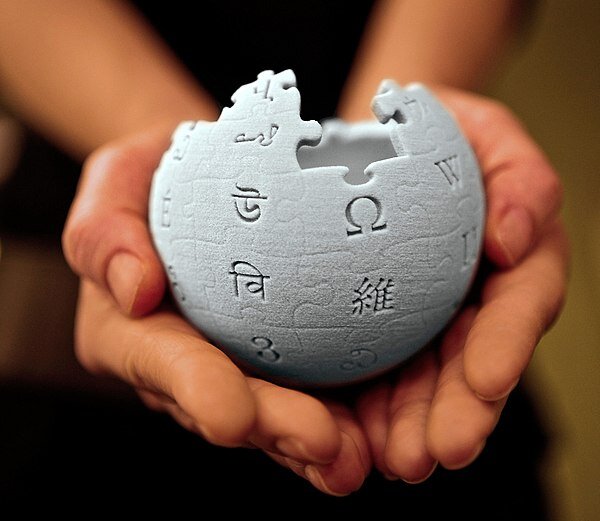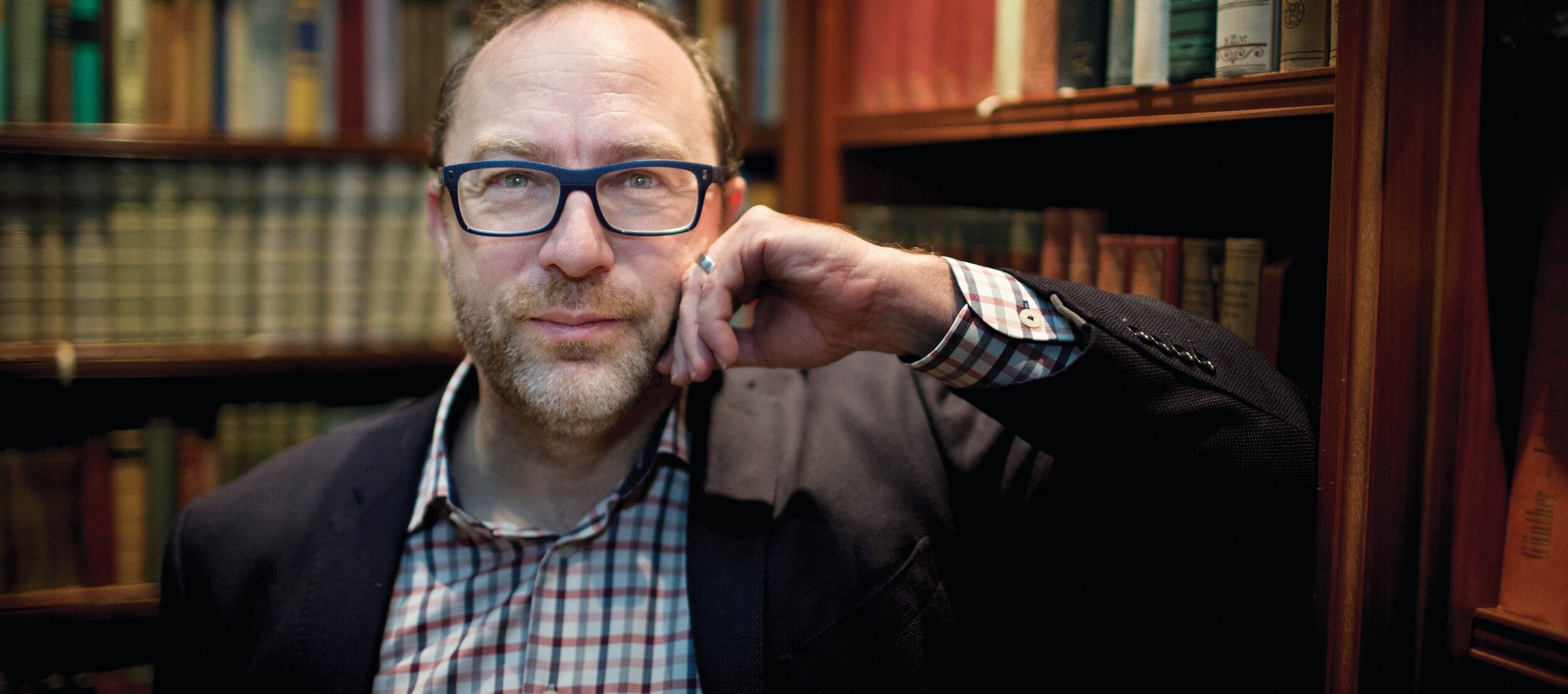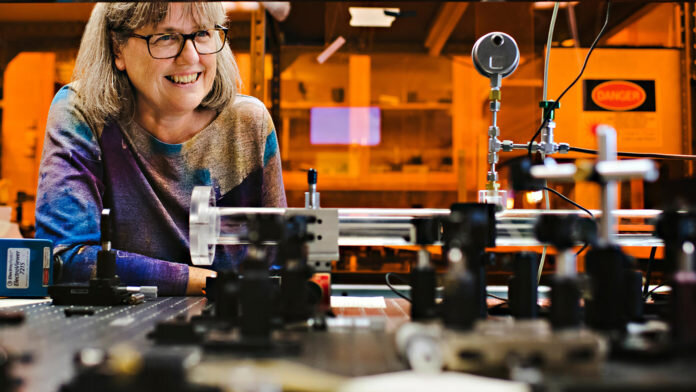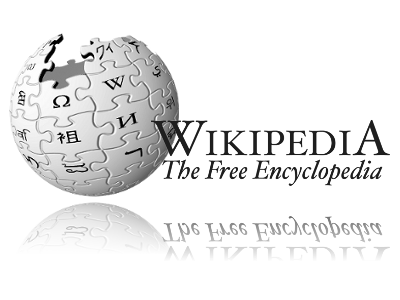OPTIONAL THEME:
KNOWLEDGE AND TECHNOLOGY
IN PRAISE OF WIKIPEDIA
CLASS ACTIVITY I:
SPONTANEOUS TRIVIA SEARCH ONLINE
Do not reveal the nature of today’s class content before completing the initial generative activity with your unsuspecting students. Ask them to recall the Pixar movie WALLᐧE (2008) from You are the product, the previous Knowledge and Technology unit. Tell them that you want to begin with an internet search trivia quiz based on the movie. They will need to open their devices and have a pen or pencil handy. Pass out individual Post-it notes. Tell students not to rush. Participation and accuracy will be important today.
When the moment seems tight, announce that they have two timed minutes, working solo, to write down answers to the following questions on the Post-it note:
1. The name WALLᐧE is an acronym. What is it short for?
2. The WALLᐧE name includes a unusual centralized dot. What is the formal name for this special character?
3. In the movie who is WALLᐧE’s robot love interest?
Collect the Post-its and have a few moments of fun socializing the responses. Then ask:
4. What sources did you use?
5. How did you conduct your search?
6. Did you double check your findings with additional sources?
7. What conclusions just emerged about fact finding on the internet?
Finally, break the 4th wall and confess that this unit of inquiry is all about how the ubiquity of Wikipedia plays into our knowledge acquisition and how we conduct academic research. Then proceed briskly to the next activity.
ACTIVITY II:
A CONSTRUCTIVIST APPROACH—
WHAT DO WE ALREADY KNOW ABOUT WIKIPEDIA?
Begin this unit with a whole class brainstorm. Do not allow students to research this topic online in the first instance. Mention that Wikipedia has been around the whole time they have been alive. They have all used it privately and as part of their formal education. Allow a maximum of five minutes of idea sharing based on the following generative question:
To what extent is Wikipedia an acceptable source for academic research? Justify your responses.
Insist everyone in the room state their view; even if consensus builds and contributions get slightly repetitive. Record on the whiteboard salient facts about Wikipedia as they emerge.
Jimmy Wales, the founder of Wikipedia. Photo credit: Herman Bredehorst/Polaris/Eyevine.
ACTIVITY III:
GOING DEEPER—
THE FREE ENCYCLOPEDIA THAT ANYONE CAN EDIT
In the previous activity it is likely that students will have constructed collectively a fairly sophisticated understanding of how Wikipedia works; including who gets to write the articles (and what that implies), how it has evolved over the years, what are some of its biases and limitations, and—not least—how it survives financially compared to the other big name digital platforms.
In this activity we will delve a little deeper and consolidate our understanding by exploring some resources, including what Wikipedia says about itself.
RESOURCE #1
Start by reading Happy Birthday, Wikipedia: Lessons from the success of a different sort of tech titan in the Economist magazine. This January 2021 article also links to a highly recommended podcast: The Economist Asks: Jimmy Wales.
RESOURCE #2
Continue with this quote about tertiary sources from the UC Berkeley Library Guide: Evaluating scholarly and popular sources.
Tertiary Sources refer to encyclopedias, dictionaries, textbooks and other reference materials that provide broad overviews of particular topics. Where secondary sources summarize and interpret an event or phenomenon, tertiary sources summarize and interpret other resources. They can be a great place to begin studying unfamiliar topics.
It is worth mentioning that https://www.tokresource.org/—the website you are using right now, is a tertiary source.
RESOURCE #3
Next it is revealing to look at what Wikipedia says about itself. Begin with the key facts and figures in the first three paragraphs of Wikipedia About. Here is the opening declarative sentence:
Wikipedia is an online free-content encyclopedia project helping to create a world in which everyone can freely share in the sum of all knowledge.
Continue with this in-house video called Wikipedia Contributors.
In Wikipedia: Academic use we are told that:
Wikipedia is not a reliable source for academic writing or research. Wikipedia is increasingly used by people in the academic community, from freshman students to distinguished professorship, as an easily accessible tertiary source for information about anything and everything, and as a quick "ready reference", to get a sense of a concept or idea.
Conclude your Wikipedia in its own words encounter with Wikipedia: Go ahead, vandalize page. This is informal and provides further insight into the editing culture and implications for lapses in reliability.
Donna Strickland in her lab.
Photo: University of Waterloo
Donna Strickland formally receiving the Nobel Prize in Physics. Photo: Getty Images
RESOURCE #4
This October 2018 Guardian article highlights the case of Donna Strickland, Nobel physics prize winner who was initially denied a Wikipedia page by a moderator. We read that “just 16% of the site’s volunteer editors are female and only 17% of entries dedicated to notable people are for women.”
SHARING AND WHAT’S NEXT?
The research activity can be completed in class or asynchronously. Conclude the activity by asking students
Was there anything strange or surprising here?
Did you learn anything new?
Imagine you were asked to write the official guidelines for the use of Wikipedia at your school—what would your bullet points be?
This activity was inspired by a conversation with my colleagues, Catherine Sullivan and Joanna Marple, esteemed librarians at the French American International School in San Francisco.
At this juncture students will be ready to grapple with Jaron Lanier’s forbidden question. His jarring BUMMER acronym and dystopian thought experiment will nudge students to continue their critique of the business model for the social media giants first encountered in the You are the product unit.
ACTIVITY IV
JARON LANIER’S DYSTOPIAN QUESTION
Jaron Lanier is a computer scientist, author and classical music composer. He was a key innovator in virtual reality technology. His presence is strongly felt in The Social Dilemma, the 2020 docudrama on Netflix. Visual: Michael Springer/Gamma Presse.
“The speed idiocy and scale of false social perceptions have been amplified to the point that people often don’t seem to be living in the same world, the real world, anymore.
This is another one of those obvious problems that sneaked up on us. Public space lost dimension but also commonality in general has been desiccated.
A thought experiment can help expose how weird our situation has become. Can you imagine if Wikipedia showed different versions of entries to each person on the basis of a secret data profile of that person?
...This might sound dystopian or bizarre, but it’s similar to what you see in your BUMMER* feed. Content is chosen and ads are customized to you, and you don’t know how much has been changed for you, or why.
*BUMMER acronym: Behaviors of Users Modified, and Made into an Empire for Rent.
”
*BUMMER acronym:
Behaviors of Users Modified, and Made into an Empire for Rent.





